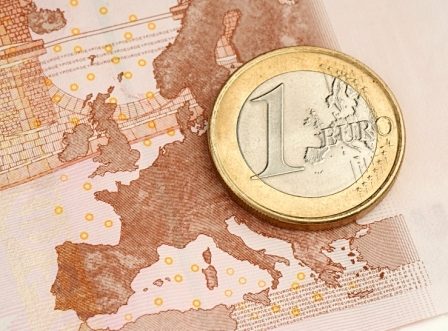
Eurozone Outlook – May/June 2014
Summary
The Eurozone is suffering from low inflation and high levels of unemployment, particularly in the southern states, yet the euro still managed to hold its own in April against currencies like the US dollar, mostly due to dollar weakness. Hoping to keep the single currency from strengthening further, European Central Bank (ECB) President Mario Draghi announced the possibility of increasing monetary stimulus – this could involve adopting quantitative easing to inject capital into the economy, as was suggested in the last issue of Outlook. Such action would help keep the euro from being overvalued, which would hurt the Eurozone economic recovery.
There was also speculation that a continued fall in inflation would lead to negative interest rates. However, it was reported that inflation had risen to 0.7% in April from 0.5% in March. Although the figure was lower than the 0.8% forecasted, it meant that inflation levels were moving slowly towards the 2% target set by the ECB.
At the time of writing (9th May 2014), mid-market rates were at €1/£0.8219 and €1/$1.3809.
Eurozone – Forecast
The ECB is very keen for the euro to weaken, as this will help the Eurozone to export their products and services, thereby boosting the member states’ individual economies. We have seen how this has benefitted China over the last few years, who have ‘controlled’ the renminbi at low levels so that their exports are more competitively priced than goods from elsewhere. This policy has been highly successful, as China is now officially the world’s largest exporter, having taken the top spot from Germany.
The problem is that everywhere else is keen to have an export-driven recovery. British businesses are already complaining about the strengthening of sterling, while Japan introduced quantitative easing with a vengeance late last year, which saw the yen tumble and their exports benefit. With the euro close to 1.40 against the US dollar, there are significant headwinds for businesses trying to sell in euros, compared to those with US dollar-priced products.
The ECB will therefore have to take action. They have previously tried to ‘talk down’ the currency, but you can only do this for so long, as markets tend to ignore it after a while. Expectations are now for the ECB to take some action in the June meeting, in the form of a reduction in interest rates and/or the introduction of a monetary stimulus programme. This is why we, and the banks – apart from HSBC, who sees the euro strengthening against sterling – anticipate the euro weakening over the next twelve months.
For expert guidance and help on how we can help with your international money transfers, call 020 7898 0500 or email us at [email protected]

 020 7898 0500
020 7898 0500